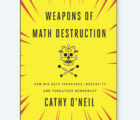
In the realm of professional sports, data analytics innovation has become a vital tool for coaches, scouts and athletes to maximize performance and results. The “Data Analytics in Sports” general session at the 2024 CAS Annual Meeting featured two speakers who apply their data analytics expertise both inside and outside of sports. If you are an actuary and a sports fan, this session was an absolute delight. Even if you are not a sports fan, the speakers made sure to share how actuaries can apply the same techniques to drive innovative strategies and insights.
The first speaker was Paul Bessire, chief technology officer and chief data officer for Coterie Insurance. Before helping to launch an insurtech in 2018, he spent over 15 years in sports analytics, most notably as CEO and co-founder of Prediction Machine. His passion for data analytics, sports, and insurance was evident from the beginning to the end of the session.
The second speaker was Mike Greenfield, who co-founded the sports statistics and data aggregator TeamRankings.com while in college. Along the arc of his career, he introduced a whole new level of data analytics to both PayPal and LinkedIn while also co-founding the data and technology companies Circle of Moms and Change Research. Though not an actuary, he definitely had many key insights to teach actuaries.
Bessire set the tone of the session with an opening quote: “2024 in Commercial Insurtech is very similar to 2004 in sports — the ‘Moneyball Era.’” For non-sports fans, this is a reference to financial expert Michael Lewis’ bestselling book — later adapted to film, starring Brad Pitt and Jonah Hill — about revolutionizing baseball team management with data analytics.
To level set the broad range of experience in the room, he defined data science as “using technology and information to make more efficient decisions.” To reinforce this definition, he offered four quick points — the last two potentially engraved on his tombstone: “Information is king. Objectivity wins over bias. Automation is the key to scale. And find the ‘so what.’” Hopefully all actuaries can see how data science undergirds their daily work responsibilities (and perhaps their personal lives as well).
Bessire believes sports are the ultimate catalyst and proving ground for data science for four primary reasons:
- Wealth of data.
- Immediacy of results and impacts.
- Closest to true meritocracy.
- Culturally significant.
His biggest breakthrough came while trying to predict live win probabilities for basketball. Other than an offensive rebound that can extend or restart a possession, any normal possession can end in only three ways: field goal attempt, foul or turnover. He used data science to distill four factors that accurately predicted which team won more than 98% of basketball games:
- Effective Field Goal (FG) Percent = (FGs Made + 0.5 x 3-Point FGs Made)/FGs Attempted.
- Turnover Percent = Turnovers/Possessions.
- Offensive Rebound Percent = Offensive Rebounds/Missed FGs.
- Free Throw (FT) Rate = FT Attempted/FG Attempted.
What does this have to do with insurance? Actuaries and our employers also have a wealth of data, though it varies by type of risk and product line. We must look forward (not back) to underwrite the risk before us. Finally, we must start with the box score,4 making sure to optimize our use of core data elements before we invest in new and more complex variables.
To help clarify the adaptation of data analytics from sports to business, Bessire closed with his list of five lessons learned:
- Outcomes that have not occurred in the past can be predicted in the future.
- Work backwards: consider the impact, not just the problem or the data.
- Focus on what matters (i.e., get the box score right first, then find signals elsewhere).
- Process is more important than results.
- Data without context means nothing.
Greenfield then took the stage to share how TeamRankings.com uses public data, simulations and game theory to win multi-player games. His company feeds predictive analytics and empirical behavior data (i.e., selections made by other players in the game) into a powerful simulation engine to recommend an optimal selection strategy.
He used the highly popular 2019 NCAA basketball tournament bracket to lead the audience through a “better bracket theory” exercise to increase their odds of winning next year’s bracket pool. Given Greenfield’s interactive presentation style with the audience, I highly recommend readers take the opportunity to watch — I cannot do it justice in words alone.
He shared several tricks and learnings which should be highly applicable to actuaries:
- Simulations are a great way to model complex systems.
- Smart contrarian choices can pay off, but many good choices are safe and boring.
- If you can stake out multiple positions, it often pays to diversify them.
- In a multi-player, winner-take all contest, others’ picks are just as important as outcome odds.
In his closing, Greenfield reminded the audience that game theory strategy can vary significantly depending on the rules and scoring system of the contest. And even with a great strategy, you still won’t win your bracket most years. We must consider our odds across many years.
Among the several audience questions, I will highlight two for Actuarial Review readers. First, can you use data models to calculate a player’s contribution to their team’s success, and therefore an indication of their salary? Bessire did exactly that while working for a National Football League agent for a time and later for a Major League Baseball team.
Second, is it better to spread salary cap money around to more athletes on the team rather than concentrating money solely on the superstars? Bessire said it depends on the sport. Highly compensating superstars is a winning strategy in the National Basketball Association, but balanced teams are the better approach in other major league sports. Greenfield agreed that the answer varies by sport and team to maximize wins, but he added that superstars have an outsized influence on marketing that may be more important than wins to team owners.
In my closing, I highly recommend watching the “Data Analytics in Sports” general session, whether you are a sports fan or not. Data analytics are essential for the CAS and its members to bring innovation to actuarial practice and the consumers we serve.
Dale Porfilio, FCAS, MAAA, is the chief insurance officer for the Insurance Information Institute. He is also president of the Insurance Research Council.













